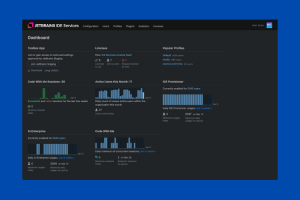In recent years, roboticists have created a variety of systems that could eventually operate in real-world environments. As most real-world settings, particularly public spaces, are dynamic and unpredictable, to efficiently navigate these environments robots should be able to gain a good understanding of their surroundings.
Researchers at the University of Pennsylvania’s GRASP Laboratory have recently carried out a study investigating how features related to a given environment can enhance a robot’s awareness and its ability to navigate its surroundings. Their paper, pre-published on arXiv, was based on two of their previous research efforts.
The first of these previous studies introduced a series of strategies that used environmental information to enhance a robot’s autonomy in completing a specific task, namely localizing the source of a chemical spill in turbulent flows. As part of the second study, on the other hand, the team introduced new agent-level control policies that leveraged environmental features or noise to maintain a desired spatial distribution of sensing robotic agents in a geophysical flow environment. Tahiya Salam, one of the researchers who carried out the study, commented:
“Our previous works focused on Lagrangian coherent structures, an important feature of dynamical systems in many applications such as oceanography and weather prediction, and how they can be used in robotics. Our new work focuses on how a similar feature, coherent sets, can be learned online and new approaches for how these features can be used in robotic applications, such as crowd monitoring in urban settings and energy-efficient navigation in water.”
In their new study, Salam and the other researchers at the GRASP Laboratory used a series of techniques that combine the global dynamics approach with machine learning. In this context, the term ‘global dynamics’ refers to the overall dynamics of a given environment and the features characterizing these dynamics. Salam also explained:
“The technique we used allowed us to learn global features from data that was collected from the environments robots are operating in. The global features, called coherent sets, have interesting properties; namely, they represent regions that disperse very slowly. Using this information about regions dispersing very slowly, robots can leverage these features for decision making.”
Salam and her colleagues computed these so-called ‘coherent sets’ online using machine learning techniques. Subsequently, they designed a framework that could control a robot’s behaviours based on the environmental features they computed. Salam added:
“We found a way to compute coherent sets in real-time without having detailed information about a model that describes the environment. In addition, we were able to use these coherent sets in clever ways to achieve smart robot behaviours.”
Salam and her colleagues evaluated the framework they developed in a series of experiments and found that it significantly outperformed offline methods for computing environmental features. The team specifically demonstrated the effectiveness of the model they developed in two scenarios where robots monitored urban environments and navigated on water.
In the future, the framework introduced by this team of researchers could ultimately help to enhance the ability of both existing and emerging robots to navigate unknown and dynamic environments. Meanwhile, Salam plans to further explore the potential of using environmental features to enhance robot navigation.








